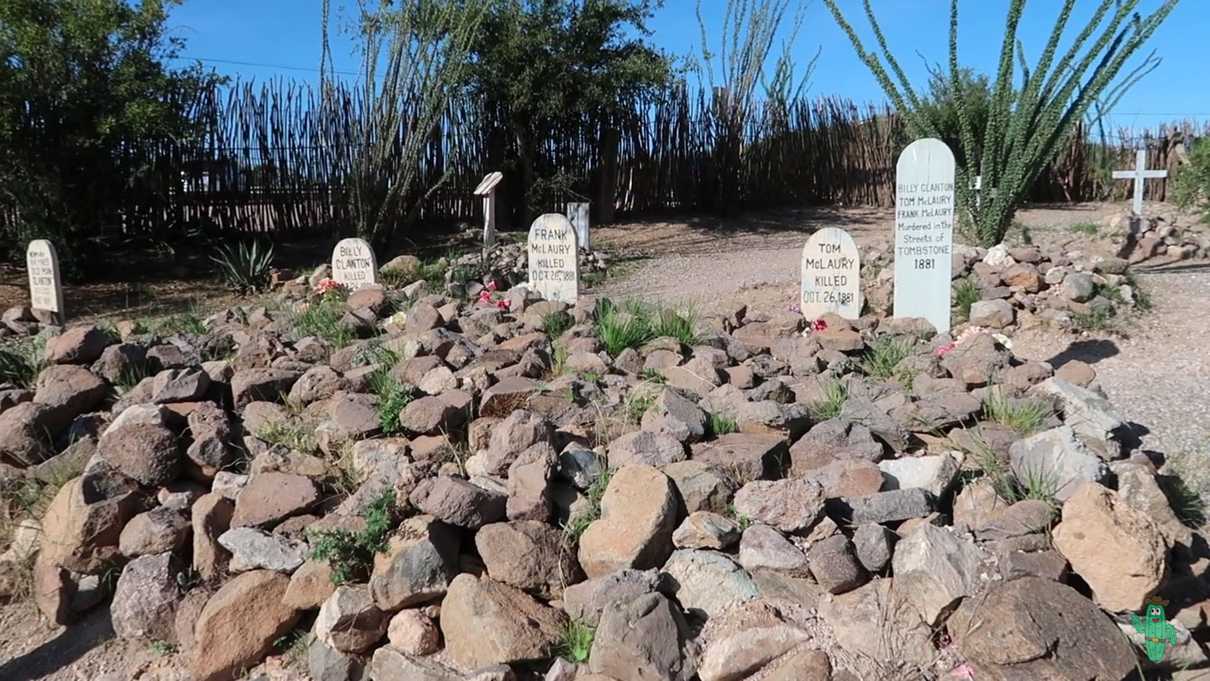Paying Our Respects at Boothill Graveyard
Tombstone, Arizona’s Boothill Cemetery began in 1878 as the “City Cemetery”. It would be several years later that a newer cemetery was built and Boothill would be renamed as the “Old City Cemetery”. Once the newer cemetery began interments, Boothill became a place mainly to bury cowboys, outlaws and a few others. Because of the reputation of those buried in the cemetery, the name Boothill eventually stuck and is what it is known as today.
Finding Boothill Cemetery is easy. It's located just north of Tombstone’s historic district on AZ-80 and a large sign points the way. At the time we visited, the entrance fee was a modest $3. Outside there is plentiful parking; the attraction has rarely been busy during our visits. Inside there is a gift shop, clean restrooms, and a few benches for resting.
On this bright, sunny day we were excited to revisit this place and dive in a little deeper to learn the names and stories of some of the residents that once called Tombstone home. Despite having stopped here before, my previous visit was quick and I didn’t have much time to see every marker. This time I was going to get to take my time reading over the pamphlet I was handed upon entering. The booklet contains the locations of over 250 graves and a brief description of some of their deaths.
The cemetery is laid out in eleven rows with varying tombstone styles and rocks covering the graves. Unfortunately as the town of Tombstone changed and Boothill became less frequently used, the condition of the cemetery fell into disrepair. Many of the original markers weathered away. Great care was taken to try and replicate the markers and place them where they originally stood, however, some bodies have not been located despite records showing burial within the graveyard. These days, the site is clean and well maintained.
Though many other boot hills exist from the pioneer days, Tombstone’s is one of the best known. In our travels, we had seen many recreations of famous Boothill grave markers. Theme parks, for some reason, seem to be the most common place to use replicas. For instance, on many of our trips to Knott’s Berry Farm, we would come across the marker for a Lester Moore. The original grave marker for Lester Moore is among several of the more famous epitaphs known from the Old West days.
Starting at Row 1 and walking past some of the markers, the rough and tough reputation of Tombstone’s past quickly became reinforced. Grave after grave noted murders, shootings and hangings. Every now and again the brutality of life would be broken up by the grave of a child who died of scarlet fever or a death by pneumonia.
Row 2 is where some of the most famous graves of Tombstone Cemetery lie. On October 26, 1881, the shootout at the OK Corral happened between the lawmen of Tombstone and a group of outlaws known as the Cowboys. Among the victims were Billy Clanton, Tom McLaury, and Frank McLaury. Their graves are the easiest to find at Boothill - a large pile of rocks covers all three graves with markers for each.
Further down the same row lie five men - Dan Down, Red Sample, Tex Howard, Bill Delaney and Dan Kelly. These men were said to be part of a store robbery in the nearby mining town of Bisbee that resulted in the deaths of four innocent people. The men were found, tried, convicted and sentenced to death by hanging. Their executions were the first legal hangings to occur in Tombstone at the courthouse. A special gallows was built to hang all five at once.
A short distance away in the next row lies John Heath’s grave. Heath was the organizer behind the robbery which became known as the Bisbee massacre. He was tried but unlike his five cohorts, he was sentenced to live in prison as he was not involved in the actual shooting. The town of Bisbee became enraged at this outcome and removed him from his jail cell, strung him up to a telegraph pole and lynched him on February 22, 1884. There are reports that state that while the marker at Boothill remains, his body was actually returned to family in Texas.
As I continued walking row by row, more headstones noted murder victims and other tragic demises. Yet one more famous grave is that of Fred White who was the first marshal of Tombstone from January to October of 1880. He was accidentally shot in the streets where the Birdcage Theater now stands by Curly Bill Brocious while trying to disarm him. This shooting has been portrayed in film and television.
It’s hard to state the effect that Boothill Cemetery can have on one when they walk around. Fans of the Old West certainly will find plenty to see and anyone generally interested in history will get a real sense of just how hard life may have been like. There’s so many names and stories to be learned that it really makes me want to dig deeper and seek out archives to piece more together. Maybe one day!




